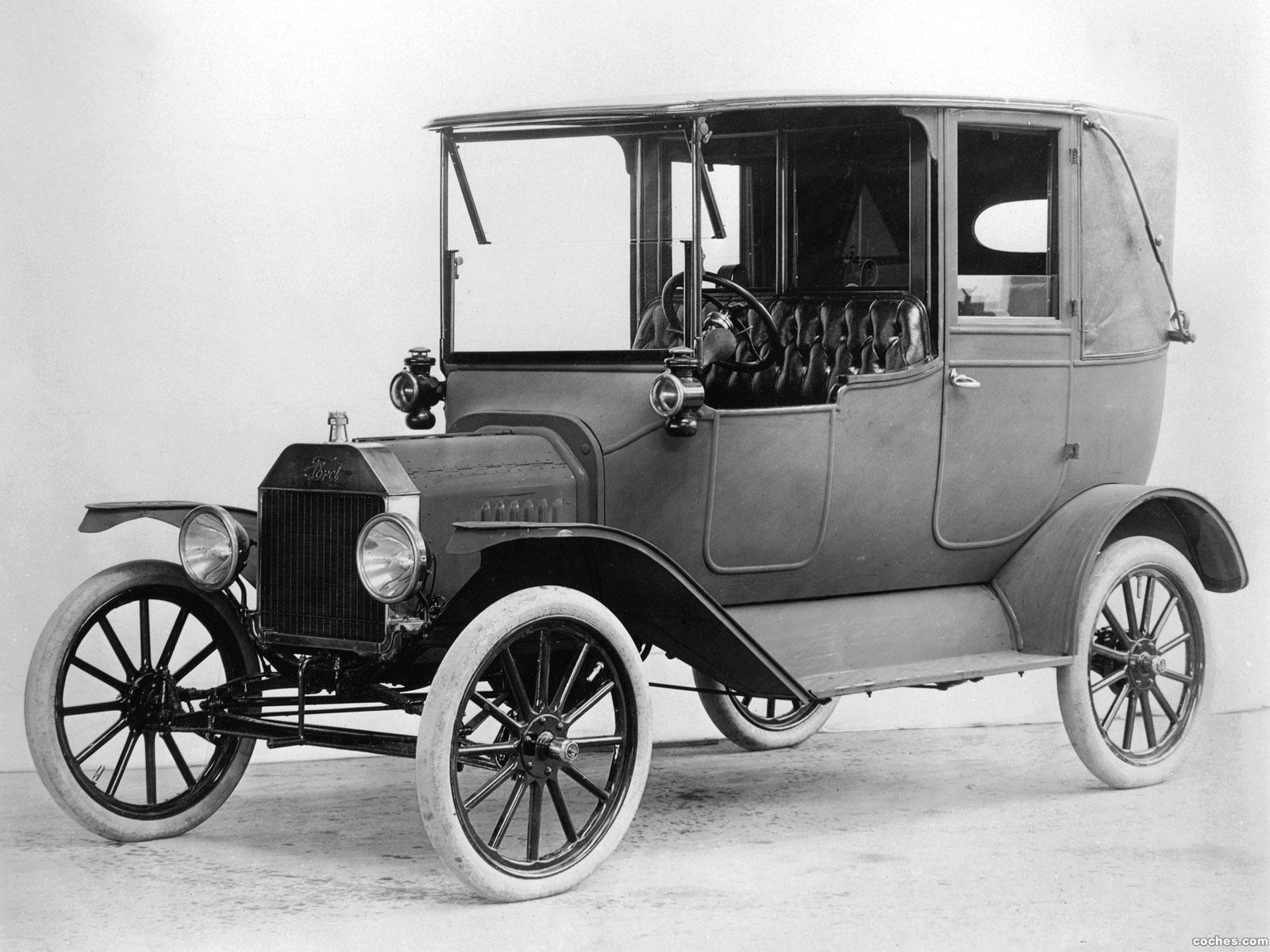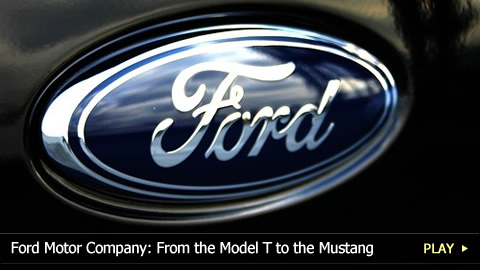Henry Ford was born on the 30th of July, 1863 to William and Mary Ford in a rural town west of Detroit, Michigan which is now a part of Dearborn. He had two sisters, Margaret and Jane, and two brothers, William and Robert.
At the age of 15, Henry showed his aptitude for mechanics. He had dismantled and reassembled several watches and timepieces owned by his friends and family and had gained a reputation as an excellent watch repairman.
His father wanted him to work with him on their farm, but Henry was really not interested in farming. When his mother died in 1876, he was devastated. His one link to the farm was cut off. So in 1879 he left home and went to Detroit to work for James F. Flower & Bros., and then later with the Detroit Dry Dock Company as an apprentice machinist. In 1882 he returned to the farm and became an expert at running the Westinghouse portable steam engine. This company later hired him to service their steam engines.
In 1888, he married Clara Ala Bryant. They had one son, Edsel Bryant Ford.
In 1891, Henry Ford joined the Edison Illuminating Company as an engineer and was subsequently promoted to Chief Engineer in 1893. After this promotion, he had a lot of time on his hands to devote for his personal experimentation with engines.
Ford Motor Company
In 1903, Henry Ford and eleven investors formed the Ford Motor Company. He had designed a car which he drove on the ice of Lake St. Clair and set a land speed record at that time.
In 1908, he introduced the 'Model T' which became synonymous with the company. The car was simple to make and equally simple to drive. He priced it cheap and publicized it widely. He created a network of dealers in all the small and large towns of America which helped boost his sales. These franchises also promoted local motor clubs to help drivers explore their countryside.
 |
| First Car : Model T |
In 1914, he created furor by reducing the per day working hours of his laborers from 9 to 8 and increasing their wages from $2.34 to $5 per day. He also created a 5-day work week. This revolutionized the way workers or laborers were paid because most skilled and talented workers flocked to work at the Ford Motor Company. This reduced their cost of training and also reduced the workers' migration from one job to the other in search of a better pay.
Henry Ford also created a Sociological Department within his company to keep a watch on the way the laborers conducted their day-to-day life. Activities such as gambling and drinking were not acceptable and this often disqualified the workers from receiving higher pay.
In the year 1918, half of the cars in America were Ford Model Ts. This was also the year when Ford retired and his son Edsel became the president of the company. But Henry kept a final decision authority and reversed his son's decisions on several occasions.
In the 1920s, Ford expanded operations on an international scale, building plants in Australia, India, France, and Italy. He helped Stalin set up a model plant, which is now called the GAZ at Gorky.
By the middle of the 1920s the Model T had been overtaken by other competitors. But Henry refused to listen to his son and make changes to the car or introduce a finance plan. Most other companies were offering these facilities, besides also having improved facilities. The Model T suffered due to this. In 1926, finally Henry relented and the Ford Model A was introduced in 1927 with improved features, and an annual model change system. In 1930, Ford finally allowed the creation of a finance plan under the Universal Credit Corporation.
Since 1925, Ford was also involved in building airplanes - the most well-known being the Ford 4AT Trimotor - during World War I.
Henry Ford was also vehemently opposed to labor unions and he did not allow the creation of a union in his factory. He went to the extent of hiring a former Navy boxer as the head of his 'Service Department' who intimidated workers and stopped any union activity. But in 1941, he had to relent and finally agreed to recognize the United Auto Workers Union.
In 1941, he also showed the world how to produce aircraft like the B-24 Liberator Bomber at the rate of one plane per hour. His workers worked in 24-hour shifts.
In 1943, Edsel Ford died of stomach cancer, and Henry finally came out of retirement.
Pacifism and Anti-Semitism
Henry Ford was a fervent believer in Peace. During World War I, he funded a peace ship to Europe. Along with 170 others like him, the ship went to Sweden and Netherlands to meet with peace activists. But this effort was quite ridiculed, especially on the grounds that his airplane company was profiting from the war.
Henry Ford also came under the scanner for several anti-Semitic activities, especially with reference to the newspaper 'The Dearborn Independent' which was owned by his close friend and private secretary, Ernest G. Liebold. The newspaper printed articles which were anti-Semitic, anti-labor and anti-liquor. In the 1920s the newspaper also printed several anti-Jewish articles in a set of 4 bound volumes under the title "The International Jew, The World's Foremost Problem".
Adolf Hitler admired Henry Ford and his ideas and policies to the point that he had a picture of Ford on his wall. Hitler had also proclaimed that he would try to put Ford's theories in practice and also re-model the Volkswagen along the lines of the Model T.
This newspaper had to be closed down in 1927 after a libel lawsuit was brought against it. Ford claimed that he knew nothing of all this and that he had not written any of these articles. He also claimed that he had no idea of the content of the articles that had been printed.
The distribution of the book was stopped in 1942, but speculation is rife with sources claiming that Ford knew about what was being printed in this newspaper and some again claiming that Ford had several good friends who were Jewish.
Death
In 1938, Ford had suffered a heart attack, after which he retired. He resumed the running of his company in 1943 when his son died. But his health had deteriorated. In 1945 he gave up the control of his company to his grandson, Henry Ford II and finally retired.
On the 7th of April, 1947, Henry Ford passed away of cerebral hemorrhage. He was 83.
Source Buzzle - www.buzzle.com/articles/henry-ford-biography-and-life-history.html

